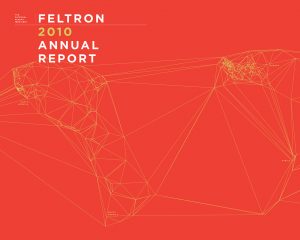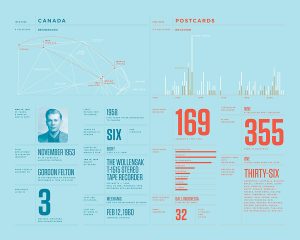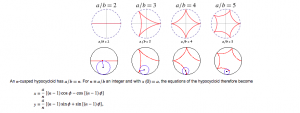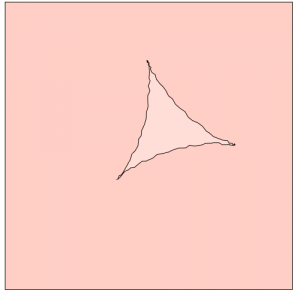sketch
var quote = ["All", "time", "is", "all", "time.", "It", "does", "not", "change.",
"It", "does", "not", "lend", "itself", "to", "warnings", "or", "explanations.", "It", "simply", "is.", "Take", "it", "moment",
"by", "moment,", "and", "you", "will", "find", "that", "we", "are", "all,", "as", "I've", "said", "before",
"bugs", "in", "amber."];
var letters = 360;
function setup() {
createCanvas(400, 400);
}
function draw() {
background(220, 170, 125);
var H = hour();
var M = minute();
var S = second();
fill(162, 137, 118);
quad(0, 250, width, 300, width, height, 0, height);
strokeWeight(40);
stroke(250, 180, 135);
beginShape();
curveVertex(0, 250);
curveVertex(0, 250);
curveVertex(width/3, 200);
curveVertex(2 * width/3, 230);
curveVertex(width, 300);
curveVertex(width, 300);
endShape();
noStroke();
fill(240, 190, 135);
rect(width/3 - 14, 45, 50, 50);
var time = H + M/60 + S/3600;
if (time <= 12) { var skyR = map(time, 0, 12, 35, 200);
var skyG = map(time, 0, 12, 40, 220);
var skyB = map(time, 0, 12, 70, 235);
fill(skyR, skyG, skyB);
}
if (time >= 12) { var skyR = map(time, 12, 24, 200, 35);
var skyG = map(time, 12, 24, 220, 40);
var skyB = map(time, 12, 24, 235, 70);
fill(skyR, skyG, skyB);
}
rect(width/3 - 15, 45, 30, 30);
if (time <= 7) {
var a = map(time, 0, 7, 200, 0);
fill(35, 40, 70, a);
} else
if (time >= 19) {
var a = map(time, 19, 24, 0, 200);
fill(35, 40, 70, a);
} else {
var a = 0;
fill(35, 40, 70, a);
}
rect(0, 0, width, height);
stroke(50, 20, 50);
strokeWeight(3);
line(width/3 + 21, height/3 + 1, width/3 + 21, height/3 + 100);
noStroke();
fill(175, 110, 20);
ellipse(width/3 + 20, height/3, 25, 25);
fill(200, 155, 37);
ellipse(width/3 + 21, height/3 + 1, 20.5, 20.5);
fill(150, 50, 100);
ellipse(width/3 + 21, height/3 + 1, 5, 5);
for (i = 0; i < 10; i++) {
push();
translate(width/3 + 21, height/3 + 1);
var angle = map(i, 0, 10, 0, 2 * PI);
rotate(angle);
fill(255, 254, 208);
ellipse(0, 7, 2, 2);
pop();
}
if (time <= 7) { var lightbeam = map(time, 0, 7, 200, 400);
} else
if (time >= 19) {
var lightbeam = map(time, 19, 24, 0, 200);
} else {
var lightbeam = map(time, 7, 19, 0, 400);
}
if (lightbeam < 200) { var lightbeamwidth = map(lightbeam, 0, 200, 80, 20);
} else {
var lightbeamwidth = map(lightbeam, 200, 400, 20, 80);
}
fill(230, 180, 80, 100);
ellipse(lightbeam, letters, lightbeamwidth, 20);
var whitelight = color(230, 240, 200, 40);
var redlight = color(150, 50, 10, 60);
var redlightheight = map(M, 0, 60, height/3 + 1, letters);
var lines = 5000
for(i = 0; i < lines; i++) { strokeWeight(.1);
var leftx = map(i, 0, lines, width/3 + 21, lightbeam - lightbeamwidth/2);
var rightx = map(i, 0, lines, width/3 + 21, lightbeam + lightbeamwidth/2);
var y = map(i, 0, lines, height/3 + 1, letters);
var amt = map(y, redlightheight, letters, 0, 1);
var fade = lerpColor(redlight, whitelight, amt);
if (y < redlightheight) {
stroke(redlight);
} else {
stroke(fade);
}
line(leftx, y, rightx, y);
}
fill(whitelight);
quad(width/3 - 15, 45, width/3 + 35, 45, lightbeam + (5 * lightbeamwidth), height, lightbeam - (5 * lightbeamwidth), height);
var textspeed = map(S, 0, 60, 0, quote.length); var textspeedinteger = textspeed - (textspeed%1);
var textspacing = map(textspeedinteger, 0, quote.length, 0, width - 25);
if (dist(textspacing, letters, lightbeam, letters - 5) < 5 * lightbeamwidth) {
fill(whitelight);
} else {
fill(155, 125, 110);
}
text(quote[textspeedinteger], textspacing, letters - 5, width, 50);
}
For this project I was inspired by the medallion in Indiana Jones that illuminates a point on a map at a certain time of day. The beam of light moves across the screen every 12 hours from 7am to 7pm and 7pm to 7am (as the sun and moon move across the sky) and fills with red every hour. The beam of light is also thinner in the middle of the picture (when the sunlight is most direct) and wider towards the edges. The quote at the bottom cycles every minute and the light through the window represents the time of day. The entire room also gets darker at night. It’s a random Kurt Vonnegut quote about time that I picked, I may think harder about what quote I really want and change it.

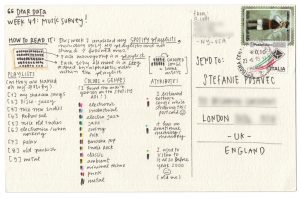
![[OLD FALL 2017] 15-104 • Introduction to Computing for Creative Practice](../../../../wp-content/uploads/2020/08/stop-banner.png)
